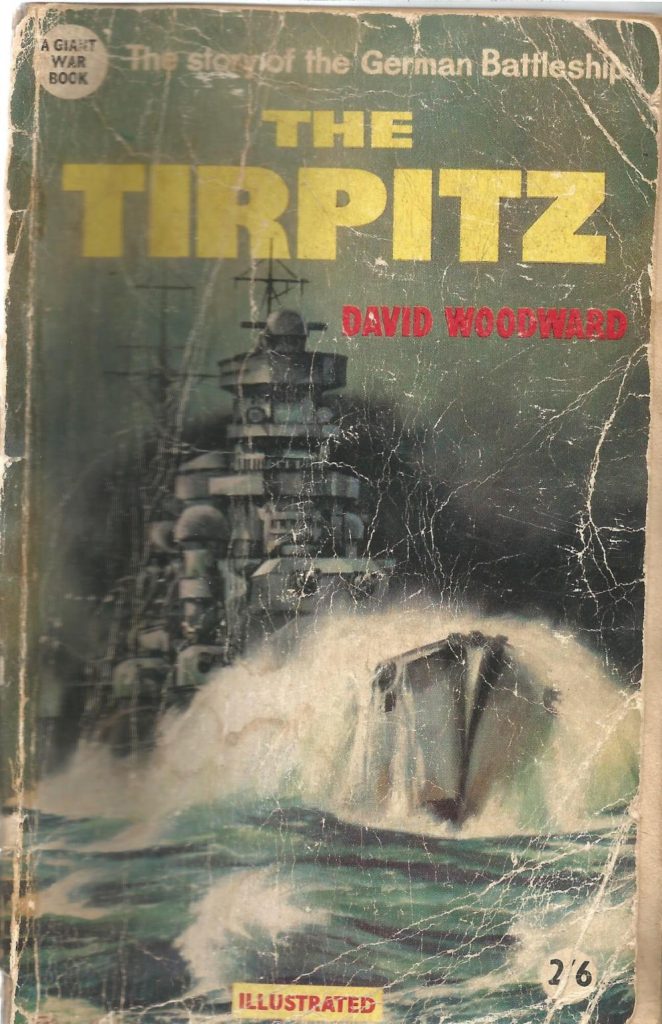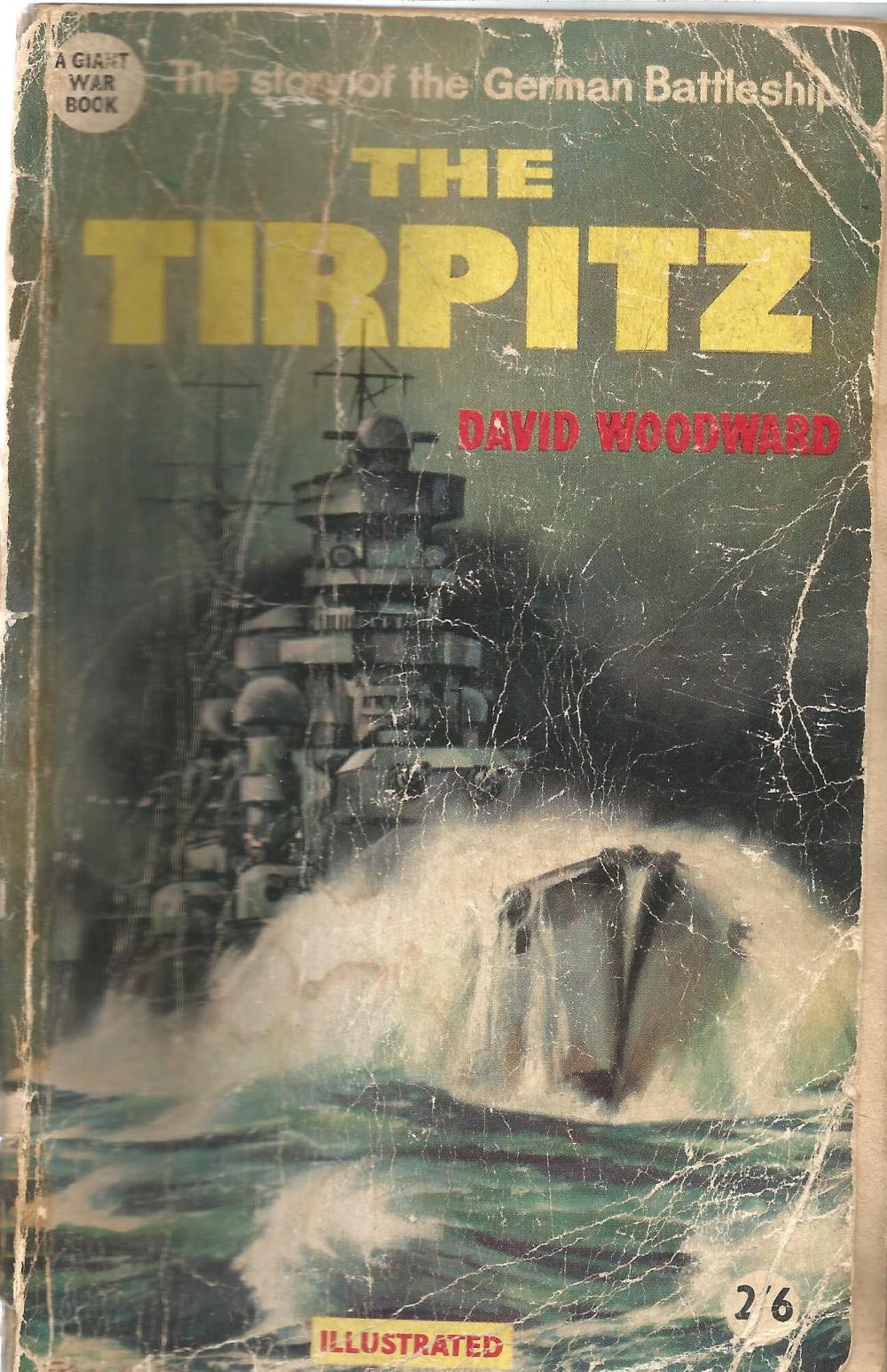Book Review: The Tirpitz by David Woodward
Subtitled “And the Battle for the North Atlantic”, this 1953 volume is a look at how the German battleship Tirpitz, the heaviest battleship ever built by a European navy, managed to influence the entire shape of the European theater of World War Two, despite seeing almost no actual combat.

The history begins before World War One, with Grand Admiral Alfred von Tirpitz building up the German navy. Germany had only recently reunified under a central government led by Kaiser Wilhelm, and wanted to establish itself as a world power. And that meant a strong navy to project its policy to colonies across the globe.
The strategy was to build a navy very quickly of sufficient strength that Britain, the top naval power, would be hesitant to engage it lest they lose control over their own colonies. Given an outsized budget, Tirpitz was able to create a modern navy with well-constructed ships manned by well-trained sailors.
What Germany didn’t have, according to this book, was a good plan of action to go with that navy. When World War One broke out much earlier than the Germans had expected a crisis to come, they were still several years from being at the strength they’d hoped to have. Plus, the assumption that the British Navy would come into the North Sea to blockade German ports and thus into the home waters of the German Navy proved incorrect when Winston Churchill (then in charge of the British Navy) decided that a much looser blockade further away would do the trick.
The one big naval engagement between Britain and Germany was the Battle of Jutland; both sides claimed victory, but damages were high enough that neither wanted to repeat the experience. After that in late 1916, it was decided the German Navy would instead concentrate on unrestricted submarine warfare, which had previously been limited because it broke the rules of engagement. It also was a big factor in the United States entering the war.
Tirpitz resigned in protest, and entered the Reichstag as a part of the right-wing nationalist Fatherland party, passing away in 1930.
Meanwhile, new heads of the German Navy failed to do any better than Tirpitz, and towards the end of the war, several ships’ worth of sailors mutinied rather than undertake a last daring but clearly futile sortie. This gave the navy a black eye to its honor as far as nationalists were concerned, and contributed to the “stab in the back” myth.
Part of the punitive terms of Germany’s surrender was the scuttling of the majority of its fleet and strict limits on the kind and size of new ships that could be built. Naturally, the German government started cheating on those limits the first chance they got, but it wasn’t until the Nazis took power that Germany was bold enough to stop pretending to abide by the treaties. Given Admiral Tirpitz’ nationalist politics and the fact that he’d left command well before the naval mutiny and was thus untainted by it, Hitler felt okay with naming a battleship after the man.
But ships take time to build, and the battleship Tirpitz wasn’t launched until 1941, well into the European part of World War Two. By this time, the German economy was feeling the pinch of sustained all-out combat, and funds were often drained from the construction of new ships.
The German Navy was further crippled by the need to prove itself loyal due to the previous mutiny, the fact that Hitler like the Kaiser before him was not good at using the navy to its best advantage, and the fact that they had no airplanes of their own and had to beg Goering’s Luftwaffe for help with air support. Even the U-boats had issues.
Nevertheless, the Tirpitz, like its sister ship the Bismarck, altered the course of the war. The mighty battleship was a potent threat to Allied shipping, so naval forces sufficient to stopping it had to be stationed in the area, stripping them from other parts of the European theater or even further afield, where they would have been useful. The drydock at St. Nazaire on the west coast of France, hundreds of nautical miles from the location of the Tirpitz, was sabotaged in a commando raid because it was the only repair facility big enough to fully overhaul the ship. And repeated attempts were made to sink the battleship.
The Tirpitz wound up spending most of the war holed up in fjords in Norway, enduring attacks by mini-submarines and “dambuster” bombers.
This book also covers much of the other action in the North Atlantic and North Sea in the time period, focusing greatly on the convoys from Britain to the Soviet Union bearing much needed military and food supplies. It ends with some speculation about the future of naval warfare.
Written as it was in the early 1950s, this book largely relied on public sources. Those with a strong interest in the subject might want to compare it to volumes written later with access to declassified documents.
The writing style is dry, with many blow-by-blow descriptions of naval actions. A rare light moment is the author’s comment on Admiral Tirpitz: “…as far as posterity is concerned he made the mistake of writing an autobiography designed to prove that he had always been right about everything.” There’s a few black and white photos and a good index.
The older paperback edition may be difficult to come by, but I believe there’s a Kindle version. Recommended to World War Two and naval history buffs.
And now, a video about the Bismarck.

